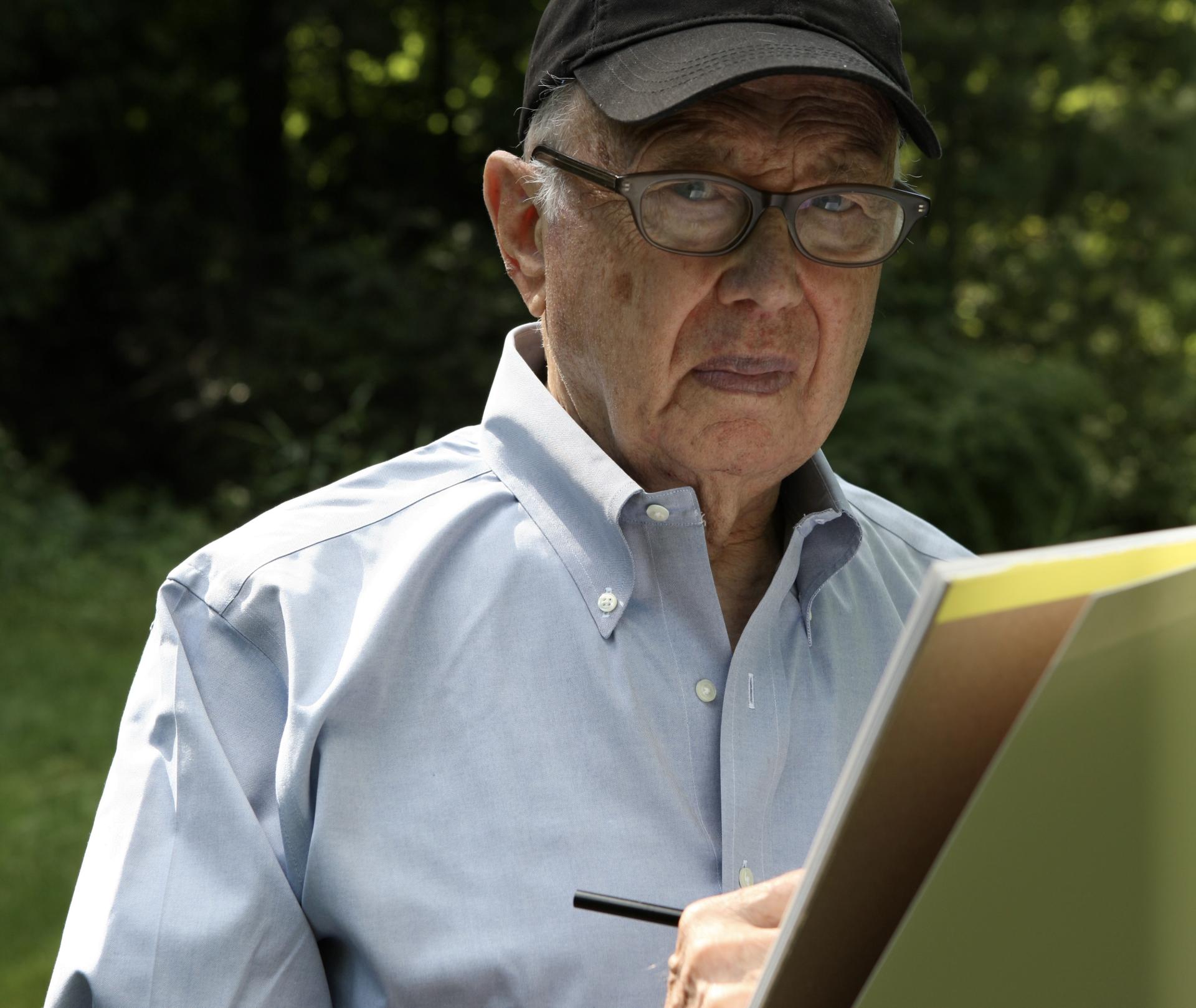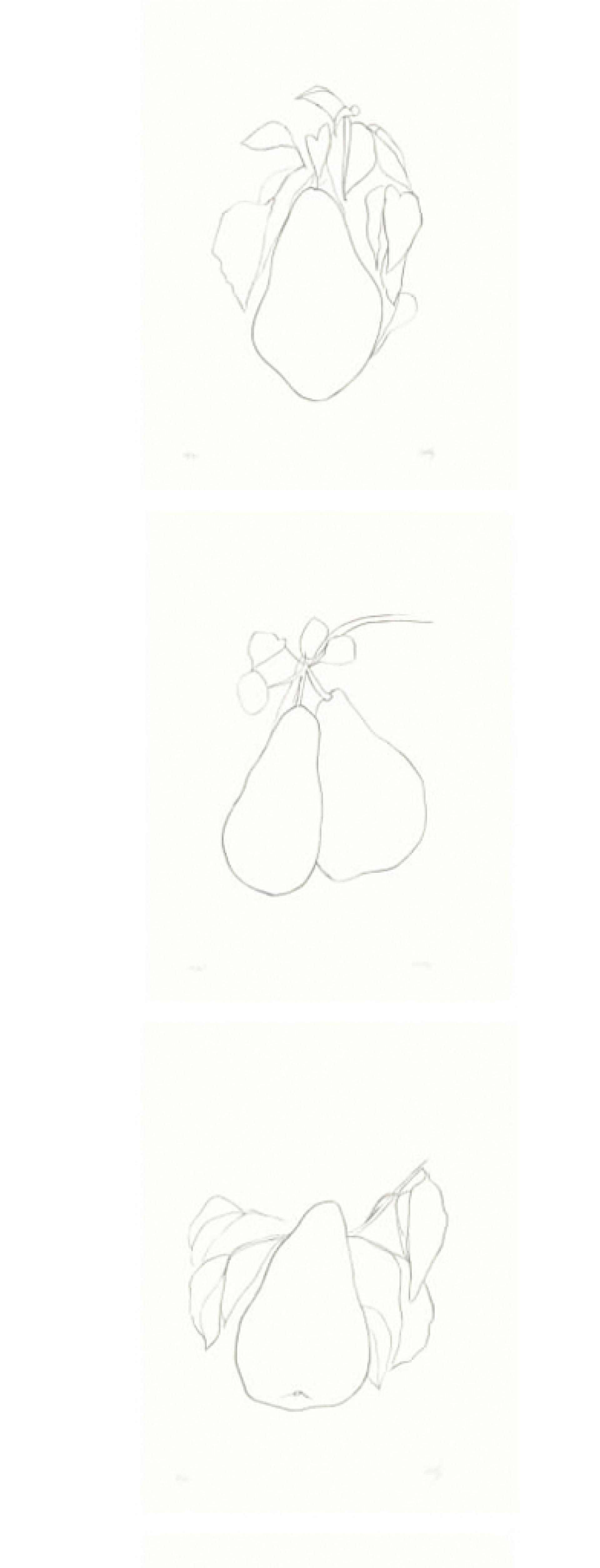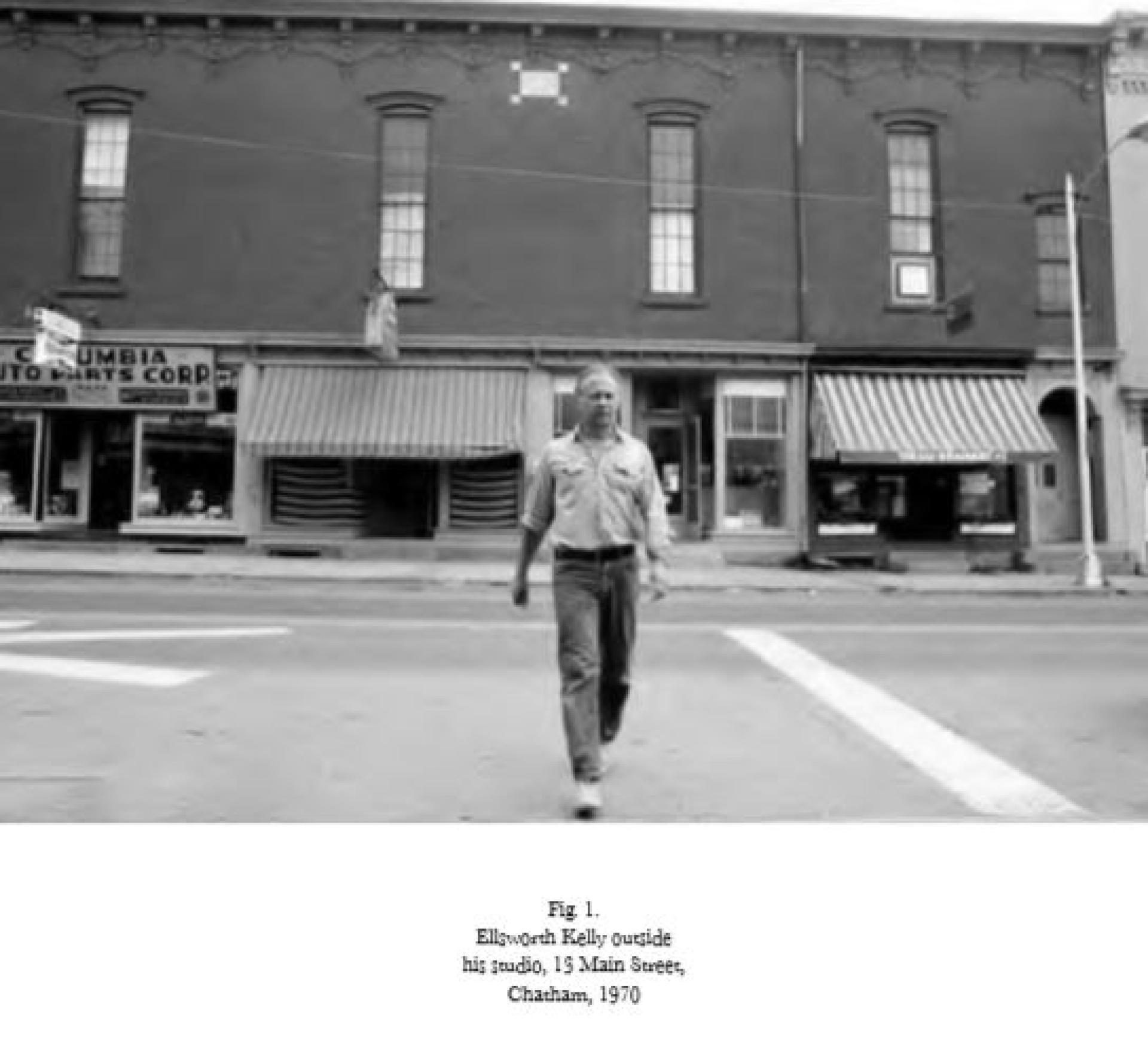You are here
Ellsworth Kelly: Plant Lithographs
Ellsworth Kelly: Plant Lithographs
This first major exhibition in the Garden's Center House Leonhardt Galleries featured Ellsworth Kelly's iconic "Plant Lithographs," in 2018.
This collection of seemingly effortless images are the result of the root of Kelly's practice: observation and perception. These prints document Kelly's time in southern France between late 1964 and the summer of 1965.
Ellsworth Kelly is described as having the “suddenness of miracles, and the improbability.” How improbable that a shy, art-smitten, bird-watching child from Newburgh, N.Y., would become a famed abstract artist while holding true to his innate desire to stay rooted in nature. The art of drawing plants was introduced to Kelly by his grandmother at age 5, and he continued the practice almost daily throughout his lifetime, which no doubt helped form what is considered the root of his practice: observation and perception. These qualities are recognized in his Suite of Plant Lithographs on exhibit in the Garden’s Center House Leonhardt Galleries from May 6 through Oct. 8, 2018.
Throughout his seven-decade career, Kelly’s plant drawings were rendered in a variety of mediums, including watercolor and ink washes, but he preferred graphite pencil and the use of line only to express the plants’ intrinsic qualities. Carter Foster, considered an authority on the life and work of Ellsworth Kelly and the author of an introductory essay appearing in the 72-page catalogue produced for this exhibition, describes Kelly’s creative process:
For the series of 1964-66 lithographs that are the subject of this exhibition, he mostly chose from a range of pencil studies he’d recently made, which he then reworked on transfer paper in order to create the print portfolio. He was therefore redrawing--from his own drawing--a specimen he’d first drawn from life. In other cases, he drew while directly observing the plant, right on the transfer paper used to make the lithograph. In another case--Catalpa Leaf--he drew the form from memory. This series, taken as a whole, has a uniformity provided by the consistent size and color of the paper and by the harmonious, roughly centered placement of the forms on each sheet, even though there were several modes of generating the form: observation from life, copying, and memory. It is quite a different act to re-draw one’s own drawing or to draw from memory than to draw from life, from the object itself. In the first case, for example, one could change — even perfect — what may not have been fully satisfactory the first time.
That Kelly’s Suite of Plant Lithographs appears as the first major exhibition at the Garden’s Leonhardt Galleries is a marriage of aspirations and hard labor. BBG Board Chairman Matt Larkin and Executive Director Mike Beck, in their original vision of what the new c. 1800s Center House could be, stated a clear objective: Create within the structure unique gallery spaces for artists who truly find their inspiration in horticulture and the natural world. A three-year planning, renovation, and construction project of the building yielded three galleries bathed in natural light while displaying their own artistic proclamations — beautiful, exposed hand-hewn beams from trees harvested centuries ago exhibit an array of unique knots and even some random charring reminiscent of a fire or smoke damage long forgotten. Visitors to the Leonhardt Gallery, which was dedicated on Dec. 1, 2017, routinely remark on its natural beauty and serenity, a testament to thoughtfully creating indoor spaces that also reflect the surrounding landscape of the Garden.
Another natural link between Kelly’s work and BBG is the proximity of the artist’s studio to the Garden. Crossing west into Columbia County, New York, is the little hamlet of Spencertown, Kelly's studio, and his home of 32 years with husband Jack Shear. The creation of the studio in Spencertown arrived by way of a detour, however. In 1970, searching for a brightly lit location within a short drive from home, Kelly’s attention turned to Main Street in Chatham, where a vast building with a brick façade and four nearly twelve-foot tall windows caught his eye. What followed is described in an essay by Ann Temkin written for the Museum of Modern Art’s exhibition, The Chatham Series, a 2013 exhibition in celebration of Kelly’s 90th birthday:
Kelly’s target happened to be above a men’s clothing store and a barber shop. One day Kelly asked the barber, whose patron he would soon become, about the building’s upper floor. It turned out that the barber co-owned it with the shopkeeper next door, and that the space was used to store the town’s Christmas lights. Kelly asked if he could take it as a studio; the barber agreed to relocate the decorations and to rent the space to him for $50 a month. To convert this storied space into a painting studio, Kelly had to install plumbing and heating and do an intensive cleanup. . . the twenty-foot-high walls had decades worth of peeling paint; Kelly covered them with panels of sheetrock. He used the north wall as a painting wall and hung finished paintings on the east wall, between the windows.
Kelly’s legacy is a contrast between rural kindness and worldly influence. Locally, he is remembered as a passionate advocate for arts and education. Beginning in 2002, he donated millions to school districts through the Ellsworth Kelly Foundation to “enrich in wonderful and imaginative ways the education of Columbia County public school students.” On the grandest of scales, he is acknowledged throughout the world as one who shaped a distinctive style of American painting through hundreds of exhibitions including Ellsworth Kelly at the Museum of Modern Art in 1973; Ellsworth Kelly Recent Paintings and Sculpture at the Metropolitan Museum of Art in 1979; Ellsworth Kelly Sculpture in 1982 at the Whitney Museum of American Art and Saint Louis Art Museum; and Ellsworth Kelly: A Retrospective in 1996 at the Solomon R. Guggenheim Museum, the Los Angeles County Museum of Art, the Tate, London and the Haus der Kunst in Munich. Kelly's final work is Austin, a 2,715-square-foot building he designed with three colored glass wall installations, an 18-foot redwood totem, and a series of black-and-white marble wall panels. Commissioned by the University of Texas at Austin in 2015, Austin was inaugurated into the Blanton Museum of Art’s permanent collection in February, 2018.
The “suddenness of miracles” that have brought Ellsworth Kelly’s iconic plant lithographs to the Garden came in a roundabout manner, requiring the resources of many and brute strength of others to pave the way to the opening of the Leonhardt Galleries. In a foreword written for the exhibition catalogue, references are made to those who made this extraordinary exhibition possible:
To Ellsworth Kelly’s husband, Jack Shear, President of the Ellsworth Kelly Foundation, we owe our sincere thanks for so generously allowing us to mount a show of Kelly’s masterpieces in Berkshire County for the very first time. Thank you also to Mary Anne Lee and Eva Walters of the Ellsworth Kelly Foundation for their valuable assistance throughout the planning phases of this project. We are indebted to Carter E. Foster, Curator of Prints and Drawings at the Blanton Museum of Art at the University of Texas at Austin, a close friend of Kelly’s, for his insightful introductory essay on the artist’s work. Our gratitude also goes to Joseph Cho and Stefanie Lew of Binocular Design, for their generosity, professionalism and skill in producing this catalogue. And finally, we wish to thank all those who helped us realize the restoration of Center House over the past three years. We would not have been able to undertake such an ambitious project without the help of the Massachusetts Cultural Council, who provided an initial grant that ignited broad community support and that allowed us to conclude a substantial capital campaign by the time the building reopened. Most importantly, we thank all of the current and former trustees of the Berkshire Botanical Garden for their guidance and vision in supporting the construction of the new Center House, and especially Joanne Leonhardt Cassullo for bringing her deep knowledge and love of art to the Garden in such a profound way.
This exhibition and the accompanying catalogue were made possible through the generous assistance of the Dorothea Leonhardt Fund at the Communities Foundation of Texas, Inc.
Biography
Kelly was born in Newburgh, N.Y., in 1923 and died in Spencertown, N.Y., in 2015. Following two years of studies at the Pratt Institute in Brooklyn, he served in the Army during World War II from 1943 to 1945, and then he resumed his education at the Boston Museum School. He returned to Paris in 1948 under the G.I. Bill and enrolled in the École des Beaux-Arts where he lived and studied for six years.
Kelly’s first one-man exhibition was at the Galerie Arnaud in Paris in 1951. His retrospective exhibitions include Ellsworth Kelly at the Museum of Modern Art in 1973; Ellsworth Kelly Recent Paintings and Sculpture at the Metropolitan Museum of Art in 1979; Ellsworth Kelly Sculpture in 1982 at the Whitney Museum of American Art and Saint Louis Art Museum; and Ellsworth Kelly: A Retrospective in 1996 at the Solomon R. Guggenheim Museum, the Los Angeles County Museum of Art, the Tate, London and the Haus der Kunst in Munich.
Kelly's final work is Austin, a 2,715-square-foot building he designed with three colored glass wall installations, an 18-foot redwood totem, and a series of black-and-white marble wall panels. Originally inspired by Romanesque and Byzantine architecture encountered while traveling in France, his idea for the building was conceived in 1986. Commissioned by the University of Texas at Austin in 2015, Austin will be inaugurated into the Blanton Museum of Art’s permanent collection in February 2018. Form Into Spirit: Ellsworth Kelly’s Austin, a solo exhibition of related works and studies at the Blanton Museum of Art, will be held in conjunction with the inauguration of Austin.
Kelly received honorary doctoral degrees from Pratt Institute, Bard College, Harvard University, Williams College, the School of the Art Institute of Chicago, Brandeis University, and the Royal College of Art, London. Among numerous awards received are Japan’s Praemium Imperiale Award in 2000, Officier de la Legion d’Honneur presented by President of France Nicolas Sarkozy in 2009, and the National Medal of Arts presented by President of the United States Barack Obama in 2012.
Help Our Garden Grow!
Your donation helps us to educate and inspire visitors of all ages on the art and science of gardening and the preservation of our environment.
All donations are 100 percent tax deductible.






